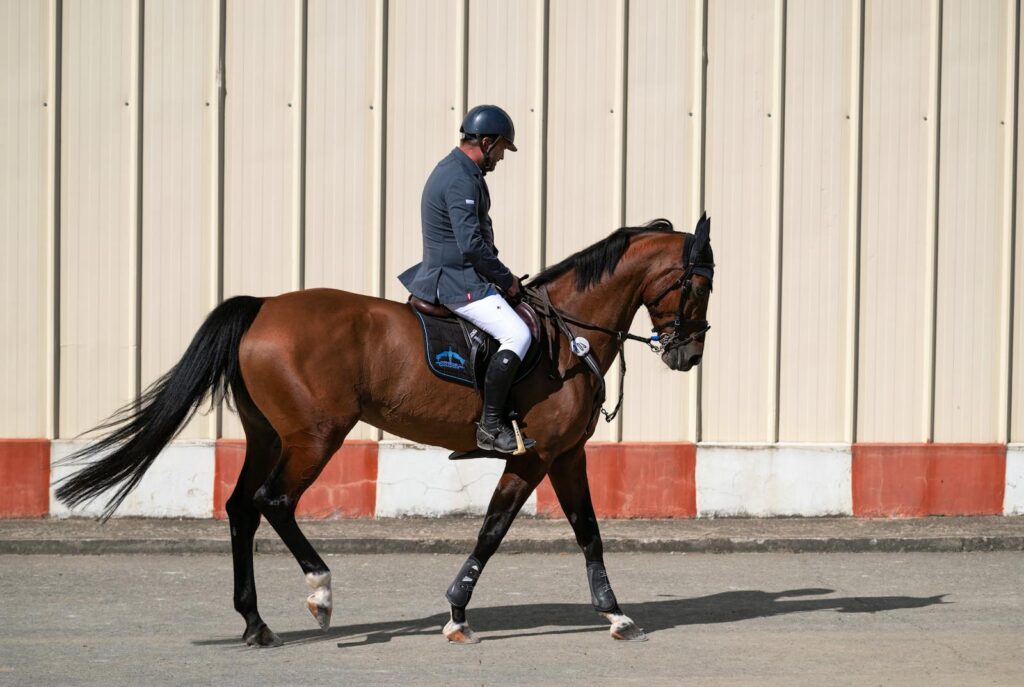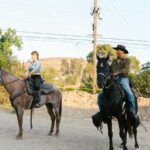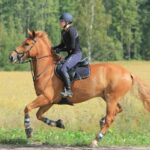Smooth, balanced transitions between gaits are the hallmark of a well-trained horse. However, many riders encounter challenges when asking their mount to pick up a lope or canter. Whether you’re working with a young horse just learning the ropes or addressing issues with a more experienced equine partner, loping problems can be frustrating for both horse and rider. These difficulties often stem from physical limitations, confusion, or previous negative experiences. The good news is that with patience, consistency, and proper technique, most horses can learn to transition confidently and willingly into a lope. This comprehensive guide explores the common causes behind loping resistance and offers practical solutions to help your horse achieve smooth, relaxed canter departures.
Understanding Why Horses Resist the Lope

Before attempting to fix loping issues, it’s essential to understand why your horse might be resistant in the first place. Physical discomfort is a primary reason horses avoid the lope, with back pain, hock issues, or ill-fitting tack being common culprits. Psychological factors can also play a significant role, particularly if the horse has had negative experiences associated with loping in the past. Some horses simply lack the strength, balance, or coordination needed to comfortably maintain the three-beat gait, especially if they’re young or haven’t had sufficient conditioning. Additionally, confusion about cues or mixed signals from the rider can leave horses uncertain about what’s being asked of them, resulting in resistance or incorrect responses.
Rule Out Physical Issues First

When a horse consistently struggles to pick up a lope, a thorough veterinary examination should be your first step. Pain or discomfort can manifest as behavioral issues, and addressing physical problems may resolve what appears to be training resistance. Have your veterinarian check for subtle lameness, back pain, or arthritis that might make the loping motion uncomfortable. Don’t overlook your tack—an improperly fitted saddle can cause significant discomfort, particularly during the increased motion of the lope. Consider consulting with a professional saddle fitter who can evaluate how your saddle sits on your horse both statically and in motion. Some horses may also benefit from chiropractic adjustments or massage therapy to address muscular tension that could be impeding their ability to move freely into the lope.
Build Proper Conditioning and Strength

Many loping problems stem from insufficient physical preparation, as the canter requires significant strength and balance. Implement a progressive conditioning program that gradually builds your horse’s topline, hindquarter, and core muscles through regular hill work, trotting over ground poles, and lateral exercises. Circle work at the walk and trot can improve balance and collection while preparing the horse for the demands of the lope. Remember that developing the necessary muscle strength is a gradual process that may take weeks or months, especially for young or previously unconditioned horses. Pay particular attention to developing hindquarter engagement, as this is crucial for a balanced lope departure and maintenance of the gait. If needed, consult with an equine fitness specialist who can design a specific program tailored to your horse’s needs.
Establish Clear, Consistent Cues

Confusion about cues is a common reason horses struggle with lope transitions. Take time to develop a clear, consistent cueing system that your horse can easily understand. The traditional cue involves sitting slightly deeper in the saddle, adding outside leg pressure behind the girth, and providing a clear release of pressure when the horse responds correctly. Ensure you’re not inadvertently giving contradictory signals, such as leaning forward (which encourages acceleration) while pulling back on the reins (which signals slowing down). Practice your cues from a halt until they become second nature, ensuring you can deliver them smoothly and confidently. Remember that timing is crucial—applying the cue when the outside hind leg is about to leave the ground often results in smoother transitions.
Master the Pre-Lope Setup

The moments before asking for a lope are critical to successful transitions. Establish a quality working trot with energy, straightness, and engagement before requesting the lope. Ensure your horse is moving forward willingly, responding to leg aids, and maintaining a steady rhythm. Many trainers recommend a slightly collected trot, where the horse has shifted some weight to the hindquarters, making it easier to spring into the lope. Position your horse correctly, using the rail or a circle to provide guidance and prevent excessive drifting during the transition. Practice controlling the quality of the trot until you can reliably produce the optimal pre-lope conditions, making mental notes of how your horse feels when transitions go well versus when they don’t. Consider recording your rides to observe these subtle differences in setup that might be difficult to feel in the moment.
Utilize Groundwork and Lunging

Groundwork can be invaluable for horses struggling with the lope, as it removes the complication of balancing with a rider. Regular lunging sessions focusing on smooth transitions between gaits help the horse understand what’s being asked without the added weight and potential confusion from rider signals. When lunging specifically for lope work, use consistent verbal cues paired with subtle body language that mimics the under-saddle cues you’ll use later. Watch for signs of balance issues or discomfort that might explain under-saddle resistance. Progressive groundwork might include free lunging in a round pen, traditional lunging on a line, and eventually long-lining, which offers more precise control over straightness and bend. Remember that the goal of groundwork isn’t just to exercise the horse but to establish clear communication and build confidence with the loping transition.
Start with the Easier Lead

Most horses have a naturally preferred or “easier” lead that feels more comfortable for them to pick up. Identify which lead your horse favors and begin your loping work focusing exclusively on this easier side. This approach builds confidence and positive associations with the lope transition before tackling the more challenging direction. When working on the preferred lead, be generous with praise and keep sessions short to maintain a positive experience. As the horse becomes more confident with the easier lead, gradually introduce the more difficult direction, being patient with potentially slower progress. Some horses may require significantly more practice on their difficult lead, and it’s important not to rush this process. Remember that even accomplished horses often have a stronger and weaker side—this natural asymmetry is normal and can be improved but rarely eliminated completely.
Use Spatial Cues to Your Advantage

The physical environment can strongly influence a horse’s willingness to pick up a lope. Many horses find it easier to lope when approaching a corner or bend, as the natural shift in balance facilitates the transition. Strategic placement of cones or barrels can create visual markers that help both you and your horse prepare for the transition point. Some trainers have success asking for lope transitions while riding toward the barn or gate, utilizing the horse’s natural forward energy in these situations. When working in an arena, establish a consistent pattern where you ask for the lope at the same locations until the horse begins to anticipate—and smoothly execute—the transition. Once reliable in familiar settings, gradually introduce loping in different environments to ensure the skill generalizes beyond a specific context.
Address Speed and Anxiety Issues

Many horses associate the lope with speed or anxiety, causing them to either rush forward uncontrollably or become tense and resistant. For the rusher, focus on quality rather than quantity, asking for just a few strides of lope followed by a calm, controlled downward transition. Practice these mini-loping sessions frequently, gradually extending the duration as the horse learns to maintain a relaxed, measured canter. For anxious horses, incorporate relaxation techniques like deep breathing (which horses often mirror from their riders) and ensure your own body language and energy remain calm and confident. Counter-conditioning exercises, where you pair previously stressful situations with positive experiences, can help anxious horses develop new, more positive associations with loping. Consider using calming supplements or adaptive equipment if recommended by your veterinarian, though these should complement rather than replace proper training approaches.
Implement Progressive Training Exercises

Specific exercises can dramatically improve a horse’s ability to pick up and maintain a balanced lope. Transitions between gaits—particularly trot-lope-trot sequences—help build the necessary muscles while reinforcing the cues. Serpentines and figure-eight patterns improve flexibility and balance, making lead changes and departures easier over time. Incorporating ground poles set at appropriate distances for cantering can help establish rhythm and encourage the horse to lift its back properly during the lope. For horses that tend to fall in or drift out during lope departures, shoulder-in and leg-yield exercises at the walk and trot can improve lateral control and straightness. Remember to progress systematically through these exercises, mastering one level of difficulty before advancing to more challenging variations. Keeping a training journal to track which exercises produce the best results for your specific horse can provide valuable insights over time.
Consider Professional Help

If you’ve made consistent efforts without progress, seeking professional assistance may be the most efficient solution. An experienced trainer can often identify subtle issues that might be missed by someone working closely with the horse every day. Professional trainers bring a toolbox of techniques developed through working with many different horses and can customize their approach to your horse’s specific challenges. Many training issues resolve more quickly when addressed by a professional who can ensure the horse clearly understands what’s being asked without developing evasion tactics. Even a few targeted sessions with a trainer can provide you with new strategies and exercises to continue implementing on your own. When selecting a professional, look for someone whose training philosophy aligns with your values and who has specific experience addressing loping difficulties.
Maintain Patience and Consistency

Perhaps the most important element in resolving loping issues is maintaining unwavering patience throughout the process. Rushing training or becoming frustrated typically creates setbacks rather than progress. Create a consistent schedule where you work on loping issues for short periods several times per week, rather than marathon sessions that might overwhelm your horse. Celebrate small improvements, recognizing that development often occurs in almost imperceptible increments before breakthrough moments. Be willing to take steps backward in your training when necessary, returning to basics if confusion or resistance increases. Consider keeping video documentation of your sessions over time, as this can reveal subtle improvements that might not be apparent during day-to-day work. Remember that training timeline expectations should be adjusted based on your horse’s age, previous experiences, and individual personality—some horses simply need more time to develop confidence with challenging skills.
Reward Success Generously

Positive reinforcement plays a crucial role in helping horses overcome loping difficulties. When your horse makes even small improvements—perhaps offering just one or two correct strides—immediately release pressure and provide clear praise through your voice, touch, or even treats if appropriate. This immediate reward creates a stronger association between the desired behavior and positive outcomes. End training sessions on successful notes, even if that means celebrating a very small achievement on particularly challenging days. Remember that horses, like humans, learn better in a positive emotional state and tend to repeat behaviors that result in pleasant experiences. Create a reward system that’s meaningful to your particular horse—some respond best to rest periods, others to verbal praise, and still others to food rewards. The key is consistency in marking the precise moment of success with immediate reinforcement.
Conclusion

Helping a horse overcome loping difficulties requires a thoughtful, systematic approach that addresses both physical and psychological factors. By ruling out pain, building proper strength, establishing clear communication, and implementing targeted exercises, most horses can learn to transition smoothly and confidently into the lope. Remember that each horse progresses at its own pace, and patience is your most valuable training tool. Whether working independently or with professional guidance, maintain a positive, consistent approach that builds your horse’s confidence and physical capabilities. With time and proper technique, the formerly challenging lope can transform into a smooth, balanced gait that both you and your horse enjoy.







